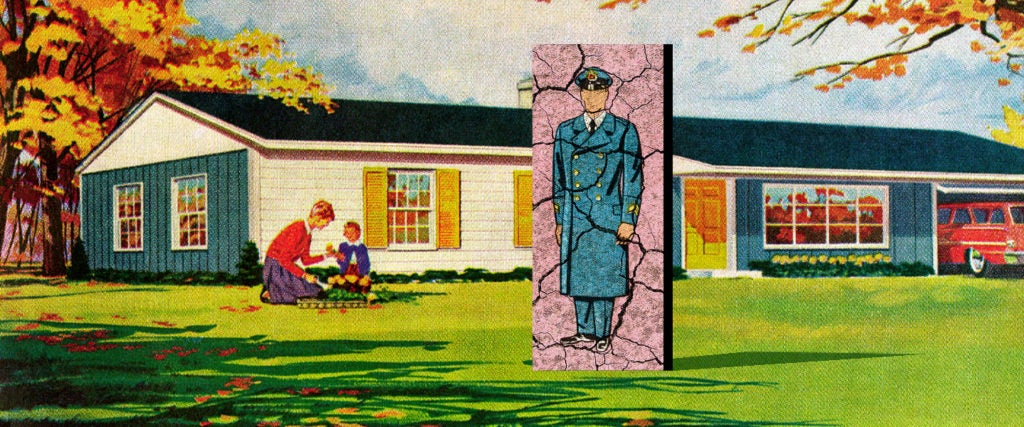The worst crime in America is segregated.
Homicides, robberies, rapes and other violent crimes happen disproportionately in poor minority communities. Crime rates have been falling across the country for the last 30 years — it’s statistically the safest era to be an American. But Black and brown people, especially those in inner-city communities, are victimized by crime that’s practically unseen in whiter, more affluent suburbs.
Those suburbs aren’t safe and clean and orderly because they’re white and wealthy. White, wealthy suburbs are safe because they benefit from two world-shifting factors: 1) the police harass less and solve more serious crimes; and 2) there’s significant funding for municipal and social services, whether that’s schools or health-care facilities or simply park space.
Rep. Alexandria Ocasio-Cortez captured this tension in an Instagram story when she replied to a commenter’s simple question: “What does an America with defunded police look like to you?”
.@AOC's answer to "what does defund the police look like?" was "a suburb" and that is totally gonna be my answer from now on pic.twitter.com/JIlIfngMCv
— Ashley (@ashley_quan) June 11, 2020
Her answer: “It looks like the suburbs.”
She continued to note that “white communities bend over backward to find alternatives to incarceration for their loved ones,” to protect their future and give them any way out. AOC name-checked Stanford rapist Brock Turner as an example of how the criminal justice system is rigged to save wealthy, white lives over poor Black ones. She also noted how different policing feels in these neighborhoods. “Affluent white suburbs also design their own lives so that they walk through the world without having much interruption or interaction with police at all,” she wrote.
Combine the factors of policing and resources, and the outcomes start to make more sense. White suburbs outperform more diverse, dense cities economically. They provide better opportunities for children. They see lower rates of crime overall, and higher educational attainment. There have been big demographic shifts in who lives in the suburbs over the last two decades. But white, affluent suburban communities have always stayed on top — and the privilege is obvious to see.
We know that white people aren’t policed with the same aggression and paranoia. They’re not confronted with either explicit racism or implicit bias. The influence of this can’t be overstated: Over-policing hurts minority lives, and the ensuing mistrust of police affects how crime is reported, investigated and solved. Greater crime and violence ruins families and mental health; it also keeps people from making more money and avoiding crime themselves.
Meanwhile, white suburbs have long been beneficiaries of gentler policing, and have become havens of pro-cop attitudes because of it. There’s money to fund better schools, and there’s less stress over childcare. Beautifying streets and providing recreational spaces makes for healthier, happier people. It’s easy to have community pride and security when home doesn’t feel like a warzone.
But for decade after decade, we’ve watched Black and brown communities falter for the same reasons, while making the same excuse about the reasons why we can’t seriously invest in them. If that’s the case, then defunding must be the way forward, right? There’s little evidence that spending to reform rather than reduce police will fix the tragic outcomes. What affluent white suburbs prove to us is that it’s all intersectional. They don’t thrive merely because they’re policed differently. They thrive because they have all the pieces in place.
How much will it cost to change things in a fundamental way?
There’s no way of knowing, but “focused deterrence” policing, which targets the most violent offenders with therapy, financial support and other social services in addition to the threat of law enforcement, definitely has its believers. Among them is criminologist and researcher Thomas Abt, who argues that a true holistic, top-down approach can create lasting change. In his book Bleeding Out, Abt writes that tackling urban violence in such a manner in the top 20 cities for homicides would cost less than $200 million in the first year, and less over time, while saving 10,000 lives in less than a decade.
That’s not going to turn the tides on American violent crime, but it puts into perspective what modest investment could do to literally keep people alive. And the point is that a swollen force walking the streets has failed to solve our collective sins. Simply throwing more man-hours at the pile of cases won’t do it, either. We need to radically address why some neighborhoods are so rich, and why others are so poor. Doing so will remain as thorny as ever.
“Today, racial apathy, not racial hatred, is a major obstacle to progress,” Abt argues in Bleeding Out. “Hatred may be the greater sin, but it is less pervasive. White people’s collective unconcern for their fellow Black and brown citizens is more prevalent and more damaging.”
White right-wing America loves to fetishize the violence that takes place in “bad neighborhoods” all around the country. It’s proof to them that minorities aren’t rational and strong enough to rise above their circumstances. But it’s an assumption rooted in naiveté, and an incomplete picture of what changes lives. One park, one shiny new school, one new nonprofit cannot change the problem. We know now — and have known for a while — that a complete overhaul is the only way we can protect Black and brown lives.

